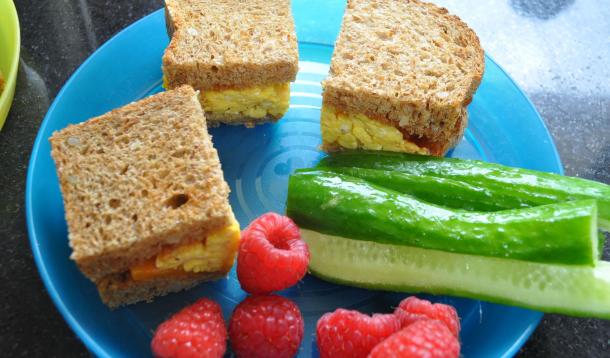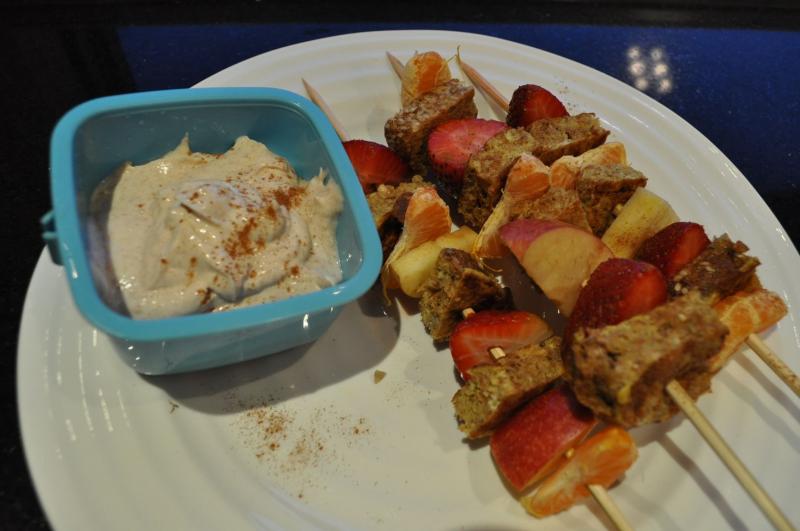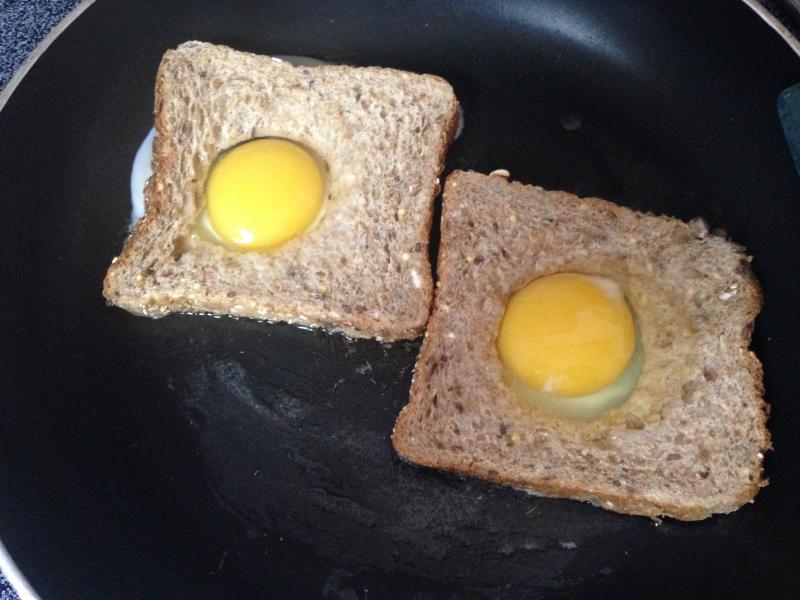
Navigating the tricky world of feeding toddlers and young kids can be exhausting. Especially for those who are parents of picky eaters — I know this from first-hand experience. Although my kids are both fairly good eaters, they have each put us through our paces at mealtimes, whether it’s refusing to eat, throwing food and making a mess, or requesting snacks around the clock.
Here are three common parenting strategies I often witness and have tested myself that DON’T work (and often perpetuate the problem) and three strategies that can transform mealtimes from dreadful to peaceful:
The word that comes to mind here is pressure. As soon as your child, especially if she’s a picky eater, feels pressure to eat something, she will back right off—the opposite of what you’re hoping for. Parents of picky eaters often dread mealtimes because they foresee a struggle from beginning to bitter end. From the moment you decide what you’re going to make, to when you clear your child’s full plate of uneaten food, you feel stressed and frustrated. You gear yourself up for the battle that you know is coming (and that you often lose), and hope that your child eats something healthy—even a few bites. Common phrases you might use include:
Although we as parents have the best intentions for our fussy eaters, we often enable picky eating and perpetuate the problem by putting all of the focus on food.
Mealtimes don’t have to bring on anxiety and dread if you can master the art of backing off. It's imperative that you take the pressure off (both yourself and your child) to make mealtimes more peaceful. This can be really (ahem… excruciatingly) hard, especially if you feel that your child isn’t eating well daily. Although not an instantaneous picky eating fix, over time, taking the focus off of the food (and what your child is or isn’t eating) and focusing more on family time (talking about everyone’s day, asking about what happened at school or camp, talking about your upcoming family trip etc.) makes your child feel at ease and will increase the likelihood of her trying things on her own. That being said, it's okay to mention food now and again during meals. Healthy chitchat about food might be “mmm, I love this asparagus- we haven’t had it in a while and I forgot how much I like it”, or “I see that you tried your chicken—how did you like it?” instead of “I’m not going to ask you again—you need to have a bite of your chicken!”
As important as taking the focus off of the food is, it’s also important to pair this strategy with my next one: Establishing (and calmly reminding your child of) mealtime boundaries.
Many parents feel as though mealtimes are out of their control — they harp and fight with their kids to eat certain foods, yet ultimately, their kids are in charge. Your child refuses to eat, so you give in and stop asking him to come to the table. He complains about what’s served, so you make him a peanut butter sandwich because you know he’ll eat it. He whines about feeling hungry before bed (even though he didn’t eat at dinnertime) so you give him yogurt and a banana in hopes that he'll go to bed peacefully and not wake up hungry. I’ve been there and know how easy it is to give in. You feel frustrated and defeated and you don’t want your child to starve - I get it. But unfortunately, letting your kids run the show will enable picky eating tendencies and will make your life more and more frustrating over time.
By establishing some appropriate mealtime boundaries with your kids (and enforcing them consistently), you can regain control over mealtimes (the what’s, where’s and when’s of feeding) and allow your kids to take care of the rest (whether and how much they eat). This is the cornerstone of childhood feeding expert Ellyn Satter’s Division of Responsibility. Parents are in charge of what is served, where it is served and when it is served. Kids are in charge of whether and how much they eat. Establishing these boundaries early on (in infancy and early toddlerhood) makes things a lot easier as they get older, but these boundaries can be set at any time (the older they are, the more patient you'll have to be).
Some of our mealtime boundaries are as follows:
These are our personal mealtime boundaries and might work well for your family too. Know that each family is unique and you should tailor your own to what works for you and your family.
I often hear parents say “Don’t bother serving him any veggies — he won’t eat them anyway,” often right in front of their child. This well-meaning strategy (after all, you don’t want food to be wasted, especially at a friend’s or family member’s house) often perpetuates picky eating two-fold: it makes a child believe that he does not and will not ever like that food (and yay! he doesn’t even have to try it again!), as well as it doesn’t give him a fair chance to warm up to it (kids often need several exposures to a food before they feel safe enough to taste it).
A recent study out of Aston University in the UK tested out “the 3 R’s” (Repetition, Role modelling, and Reward) of feeding with 115 children aged two to four. These children were separated into four groups and for 14 days served vegetables that had been previously rejected. Those kids who were offered a vegetable several times (repetition), whose parents also ate the vegetable happily (role-modelled) and who were offered verbal praise for trying a vegetable (rewarded) ate more than four times the amount of vegetables than they had prior to the study. Even those who were exposed to only two R’s (repetition and reward) ate significantly more than the control group.
We’ve known for a long time that kids need repeated (and non-pressured) exposure to certain foods (sometimes 15 or more times) to warm up to them, but parents - me included - are often quick to assume that their child will not even touch it, so they don’t bother serving it. It’s important not to assume. Recently my son who is four and a half, all on his own, ate salad for the first time and loved it. Instead of saying “Oh, you won’t like it” (which I almost did!) when my son asked for a helping of salad, I gave him the benefit of the doubt and served him some. Much to everyone's surprise, he gobbled up the whole thing and now eats salad regularly. Know that kids’ palates are ever-changing and what your child doesn’t like one day (or for several years) might be their new favourite food the next day.
![]() If this was helpful, you may want to check out "How This Well-Meaning Habit Is Enabling Your Picky Eater" as well as "6 Game-Changing Questions To Ask Your Picky Eater At Mealtimes"
If this was helpful, you may want to check out "How This Well-Meaning Habit Is Enabling Your Picky Eater" as well as "6 Game-Changing Questions To Ask Your Picky Eater At Mealtimes"
I also post free daily tips, resources and articles on picky eating over on my Facebook page

We have oatmeal almost every morning for breakfast. I either make from scratch, reheat leftovers, or eat it chilled with some Greek yogurt (I usually make a big batch at the beginning of the week). To avoid boredom, I add lots of variety: apple cinnamon oatmeal, baked oatmeal with berries, these delicious oatmeal muffins, or peanut butter and banana oatmeal (a kids favourite). Oatmeal is super versatile and is delicious hot or cold. It can even be added to smoothies for a fibre boost. Because of the plethora of health benefits, including protection against heart disease and Diabetes, improved digestive health, weight management and even mortality, the dietitian in me loves eating it and serving it to my family. The Mom in me loves that my kids will eat it, it's quick and easy, and that it makes great leftovers.
Banana Coconut Oatmeal With Blueberries
The HOT version:
I love this version because I can make a BIG batch at once (I usually double this recipe) and I can eat it hot, reheated or chilled.
Ingredients
Directions
 In a medium pot over medium heat, heat butter until melted. Add steel cut oats and stir for 2 minutes to toast.
In a medium pot over medium heat, heat butter until melted. Add steel cut oats and stir for 2 minutes to toast.
 Stir in cinnamon, nutmeg and salt.
Stir in cinnamon, nutmeg and salt.
 Add hot water and milk and stir, bringing to a boil. Cover and turn heat down to low; cook oats for 20 minutes.
Add hot water and milk and stir, bringing to a boil. Cover and turn heat down to low; cook oats for 20 minutes.
 Remove lid and stir in mashed banana and maple syrup. Continue cooking, uncovered for 15 minutes, or until oats thicken to your desired texture.
Remove lid and stir in mashed banana and maple syrup. Continue cooking, uncovered for 15 minutes, or until oats thicken to your desired texture.
 Serve immediately and top with blueberries, almonds and coconut, as desired.
Serve immediately and top with blueberries, almonds and coconut, as desired.
Serves 4


Inspired by: spoonfullofflavour.com
The COLD version:
I love this version because it's SUPER quick to throw together the night before and appeals to me more in the summer months because it's chilled
Ingredients
In a mason jar, combine:
 Put top on and gently shake to combine ingredients. Take top off and add:
Put top on and gently shake to combine ingredients. Take top off and add: Incorporate fruit by gently stirring. Replace the lid and leave in the fridge overnight.
Incorporate fruit by gently stirring. Replace the lid and leave in the fridge overnight.
 In the morning, add slivered almonds and shredded coconut to taste.
In the morning, add slivered almonds and shredded coconut to taste.


If you like this recipe, check out my Facebook Page, where I post healthy but delicious recipes for families, as well as helpful nutrition tips, articles and resources specifically for babies, kids, pregnancy, picky eating, and more.

School's out and lunch box packing is on hold for the summer. Phewf! Although home lunches may seem easier than packing school lunches, there are only so many peanut butter and jam sandwiches that your kids will eat (I say this, because this is often the lunch option that I often fall back on when I'm stumped for ideas). It's important that kids eat a balanced, nutritious lunch including high quality protein, carbohydrates for energy, healthy fats and vitamins and minerals. Even though this translates into "healthy", for us parents, it doesn't have to translate into "boring" or "blah" for our kids. In fact, it can mean fun and delicious. Here are five of our go-to lunch options that are kid-approved:
In between two slices of whole grain bread, place just-made (or warmed left-over) scrambled eggs (enough to cover one slice of bread), two to three thin slices of cheese, and tomato slices (ketchup optional). Allow cheese to melt and slice into quarters or halves. Serve with raw veggies and hummus and/or cut up fruit.



Serves 2
Combine 1/2-3/4 cup Greek yogurt (plain or vanilla), 3/4 cup frozen berries or other fruit, 1/2 banana, 1 tbsp natural peanut butter (or 1 tbsp seeds such as flax, hemp or chia), large handful (or two) of greens such as kale or spinach, 2 tbsp rolled oats (optional) in a blender. Add just enough milk to cover 3/4 of the ingredients. Start blending. Add more milk it needed and blend until smooth. Enjoy!

Take leftover French toast (I always make extra on the weekend for easy weekday breakfast or lunches), and cut into small squares. Alternating with chunks of your favourite fresh fruit, skewer the French toast pieces (or just make a French toast fruit salad in a bowl for little ones). In a separate bowl, mix together 1/2 cup vanilla Greek yogurt, 1.5 tbsp peanut butter, 1 tsp chia seeds (optional) and a sprinkle of cinnamon. Serve skewers with dip and your kids will gobble them up!


* original recipe credit to: Alberta Milk's "More About Milk" blog
I know this one is super simple, and some may think not-so-nutritious, but I'm a real Mom who uses some boxed, packaged products from time to time for the sake of convenience (and to add fun to our meal and snack rotations). You can use a boxed mac and cheese that you like (I like Annie's organic white cheese shells), add frozen peas (this not only adds nutrition, but also cools the mac and cheese down!) and voila! I usually serve with raw veggies and dip.

Here's a super quick homemade mac and cheese recipe if you have a bit more time to spare.

A you can see, I cook with eggs a lot because they're so versatile and easy to work with. I make frittatas a lot, for breakfast, lunch and dinner, and just add whatever veggies and leftover meat we have in the fridge.
Ingredients
1 cup chopped veggies such as mushrooms, tomato, and bell peppers
1 large handful of fresh spinach
6 large eggs
1/3 cup 1% milk
½ cup cheese grated
2 tsp butter for sautéing
Salt and pepper to taste
Directions
 Preheat oven to 400 F.
Preheat oven to 400 F. In medium sized bowl, combine eggs, milk, grated cheese, salt and pepper until well mixed. Set aside.
In medium sized bowl, combine eggs, milk, grated cheese, salt and pepper until well mixed. Set aside. On stove, heat butter over medium heat in medium sized skillet
On stove, heat butter over medium heat in medium sized skillet Add chopped veggies and sauté for 3-5 minutes until tender. Add fresh spinach and cook until just wilted- do not over-cook veggies.
Add chopped veggies and sauté for 3-5 minutes until tender. Add fresh spinach and cook until just wilted- do not over-cook veggies. Add egg mixture to pan and gently disperse veggies evenly within egg mixture. Cook for about 5 minutes, until egg mixture is cooked along edges. Transfer to oven, uncovered, for 15-20 minutes or until frittata is firm (not runny) in centre.
Add egg mixture to pan and gently disperse veggies evenly within egg mixture. Cook for about 5 minutes, until egg mixture is cooked along edges. Transfer to oven, uncovered, for 15-20 minutes or until frittata is firm (not runny) in centre. Remove pan from oven and allow to cool. Remember to always cover the handle with an oven mitt (it’s steaming hot!).
Remove pan from oven and allow to cool. Remember to always cover the handle with an oven mitt (it’s steaming hot!). Cut and serve on top of whole grain toast and pair with salsa or a salad.
Cut and serve on top of whole grain toast and pair with salsa or a salad. Want to make the muffin-tin version instead? Skip the stove-top and add egg mixture directly to greased muffin-tins. Place in 400 degree oven for 15-20 minutes!
Want to make the muffin-tin version instead? Skip the stove-top and add egg mixture directly to greased muffin-tins. Place in 400 degree oven for 15-20 minutes!


*Original recipe found here: More About Milk: Sarah's Suppertime Frittata
Top whole grain bread with a thick slice of tomato and then cheese. Place under the broiler in your oven or toaster oven for 2-3 minutes until cheese is melted. Serve with raw veggies and hummus.

These delicious two-ingredient banana pancakes have been a hit since I posted them on the blog a couple of months ago in my "Breakfast Outside the Box" series. My kids love them, so I've decided to add them to our lunch rotation regularly. We serve them with Greek yogurt and berries or topped with peanut butter (and alongside cut-up fruit).


Heat a frying pan over medium-high heat on the stove and melt 1 tsp of butter. Make holes in two slices of whole grain bread and place the bread in the frying pan. Crack an egg into each hole. Flip when golden brown. Serve alongside veggies and dip or fresh fruit. My kids like a bit cheese melted on top of theirs.



Please check out my Facebook page for more easy, kid-friendly recipe ideas as well as daily nutrition tips, resources and articles.
![]() RELATED: Kid-Friendly Cheesey Caulitots
RELATED: Kid-Friendly Cheesey Caulitots